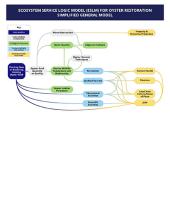
Ecosystem services such as water purification, coastal protection, and food production are increasingly important considerations for coastal managers as they design management interventions to protect coastal habitat. A collaborative project led by the Rookery Bay and North Carolina National Estuarine Research Reserves and Duke University's National Ecosystem Services Partnership created resources to help coastal managers streamline the integration of ecosystem services into their programs. These include guidance to develop Ecosystem Services Conceptual Models for estuarine habitat types, generalized Ecosystem Services Conceptual Models for oyster and mangrove habitat, tools to identify socio-economic metrics to monitor, assess and value coastal ecosystems, middle school lessons, public outreach materials, case studies in North Carolina, Florida and Hawaii, and an online ecosystem services toolkit for coastal managers.
About this resource
These generalized Ecosystem Services Conceptual Models summarize the effects of oyster reef and mangrove habitat restoration on ecological and social systems. They offer a foundation for coastal managers to identify and anticipate ecosystem service outcomes of projects. These models were developed in partership with the Rookery Bay and North Carolina National Estuarine Research Reserves and their stakeholders.
Accompanying these models is a database of ecological, human activity, and socioeconomic metrics. These metrics can be used by coastal managers to develop localized Ecosystem Services Conceptual Models and to standardize the includsion of ecosystem services in habitat restoration project monitoring.